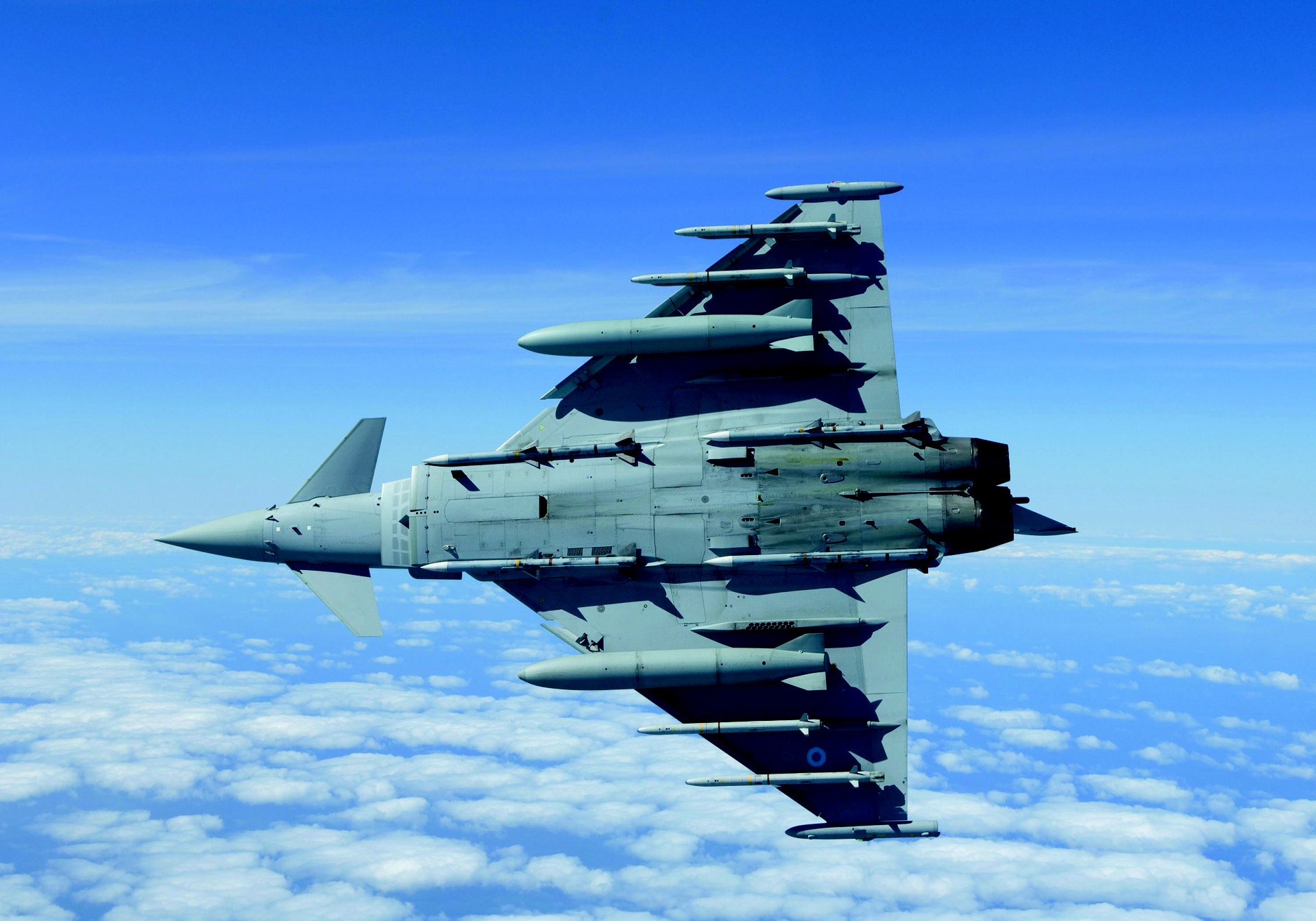With more than half (60%) of their airframes’ life still remaining, young enough to see extensive service at least for the next two decades, 30 Eurofighter Typhoon jets of the Tranche 1 variant will be axed from the Royal Air Force’s (RAF) fleet by 2025.
India’s Pride, Neighbour’s Envy – Why Rafale Jets Find Few Global Buyers Compared To Eurofighter Typhoons?
Tata-Lockheed Martin Joint Venture Achieves New Milestone In ‘Make In India’ Defense Production
This is in line with the Defence Command Paper (DCP) released on March 22 this year. The RAF has a total of 160 Typhoons in service, of which 53 are Tranche 1, 67 are Tranche 2 and 40 are Tranche 3.
The DCP said that the Tranche 1 jets were originally slated for retirement by 2019, but were retained following the 2015 Strategic Defence and Security Review (SDSR), which recommended 23 Tranche 1 Typhoons be given a life extension to keep them in service until 2040.
This would leave 30 in their original form. Tranche 1 Typhoons will now be retired with their airframes having served only for 2,544.8 hours – just 42% of the 6,000 hours of their full life.
Over 750 Military Bases Across 80 Countries: How US Military Overshadows China In Projecting Power Overseas
Of the 30 remaining Tranche 1 jets, 20 are in active service and 10 are in storage, according to Under Secretary for Defence James Heappey’s response to a question in Parliament.

Eurofighter Typhoon Tranche 1 Limitations
The Tranche 1 jets had software limitations that could allow them to be used only for air superiority roles like the Quick Reaction Alerts (QRA) and not multi-role missions that involved ground attack.
QRA, which involves rapid interception of hostile aerial targets, are being met by Typhoons in Romania, Falkland Islands (or the Malvinas the Argentines call them), and Operation Shader, which is the name for Britain’s mission against ISIS in Iraq.
While their presence did free Tranche 2 and 3 jets of air dominance missions, focusing on more complex missions, their maintenance and life-cycle costs were drawing sums that the UK wants to use for on defense programs.
This includes the joint development of the SPEAR air-to-surface missile, the highly advanced Radar 2 system, and an ambitious stealth jet, space, and nuclear rearmament projects.
Declassified: F-22 Raptor – US’ Most Powerful Stealth Aircraft Was Almost ‘Up For Sale’ With A Humongous Price Tag
Interestingly, it’s not only the Trance 1 but also 14 Lockheed Martin C-130J Mk.4 tactical transport, Airbus Puma HC2 helicopters, Gazelle helicopters, CH-47 Chinook heavy-lift helicopter, E-3D Sentry Mk.1 Airborne Early Warning (AEW), and the Hawk T1 trainers, that will also be exited from service.
The C-130J is expected to be replaced by the Airbus A-400M. Except for the Hawk and the Tranche 1 Typhoons, the UK Ministry of Defence also plans to sell all the other equipment through the Defence Equipment Sales Authority (DESA), for which a brochure has been published, and circulated to potential international buyers.
Where The Money Would Be Used?
Italy’s Leonardo and British-French MBDA are also working on the Select Precision Effects At Range Capability Electronic Warfare (SPEAR-EW) missiles for Suppression of Enemy Air Defence (SEAD) missions.
Once fully integrated with Typhoon, SPEAR-EW, SPEAR-3 and the Litening V pod for night operations will give it a ‘homing jamming capability’ and increase its self-protection.
The Typhoon is also slated to have a Leonardo-developed BriteCloud active decoy system that generates Radio Frequency (RF) jamming pulse for enemy missiles, giving them a ‘false target’ to lock on to. The Radar-2, meanwhile, is a new generation Active Electronically Scanned Array (AESA) radar that enhances the overall targeting and tracking capabilities of the Typhoon.
We think @TyphoonDisplay may have been enjoying himself over Helsinki last night.
Did you see him…..or hear him? 🚀 https://t.co/Fh2ZFPWoKQ#hxhanke #eurofightersuomelle 🇫🇮🇬🇧🇩🇪🇪🇸🇮🇹 @eurofighter @Leonardo_UK @AirbusDefence pic.twitter.com/VxHo9K1JbV
— Eurofighter Finland (@BAES_Finland) August 6, 2021
But it is not only for upgrading the enhanced Typhoon variants that Britain needs money for. It is developing an ambitious fifth-generation stealth fighter and space surveillance assets too.
The MoD is investing over 2 billion euros in the Future Combat Air Systems (FCAS) program, with the British-Italian joint project, the Tempest, being its crowning glory. The FCAS envisages drones, both wingmen and swarming UAVs, to operate in a highly networked environment against peer competitors.
The Skynet 6 military communications satellite worth 5 billion euros is another staggeringly advanced project that is expected to operationalize over the next 10 years. This is besides the 1.4 billion euros planned for a new Space Command that will form a part of a new Intelligence Surveillance and Reconnaissance (ISR) mechanism.
This is alongside the US, which is poised to unveil a hitherto top-secret satellite disabling system, which is speculated to be anything from a ground-based laser, to microwave or Radio-Frequency jammers installed on satellites themselves.
After 4.5-Gen Rafael Jets, Why Is Indian Air Force Taking A Step Back With Second-Hand Mirage 2000s?
China has been long developing such capabilities, with many experts marking the era as a new space race.
Lastly, the UK’s modernization also touches the nuclear realm, where its Integrated Review published earlier this year, envisages the removal of caps on its nuclear warhead stockpile. The island nation that currently holds not more than 195 warheads, calls for a 40% increase in the same.
Many have raised an alarm over the policy, saying it would trigger a nuclear arms race and possible hostile nuclear postures adopted by adversaries, that can lead to accidental launches and misreading of signals during crises.
- Parth Satam is a Mumbai-based journalist who has been covering India’s defense sector for more than a decade. He maintains a keen interest in defense, aerospace and foreign affairs and can be reached at satamp@gmail.com
- Follow EurAsian Times on Google News